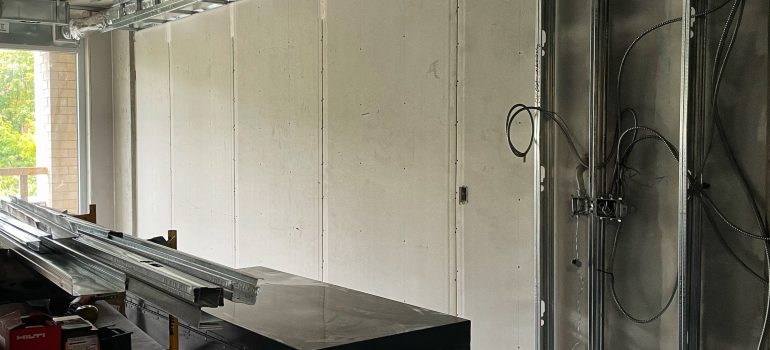Maximizing Energy Efficiency with Insulated Drywall
In today’s world, energy efficiency is a critical aspect of building construction. With the ever-increasing cost of energy and the need to reduce carbon footprint, homeowners and builders alike are looking for ways to minimize energy usage in their homes. Insulated drywall is one such solution that can help achieve better energy efficiency.
What is Insulated Drywall?
It is a specialized type of drywall that comes with insulation built-in. Unlike traditional drywall, it has a layer of foam insulation sandwiched between two layers of gypsum board. This provides improved insulation and helps reduce the transfer of heat and cold between the inside and outside of a building.
Benefits of Insulated Drywall
Increased Energy Efficiency
The primary benefit of insulated drywall is increased energy efficiency. By reducing the transfer of heat and cold, it helps maintain a more stable temperature within the building, reducing the need for heating and cooling systems to work harder. This, in turn, results in lower energy bills and reduced carbon footprint.
Improved Indoor Air Quality
It helps improve indoor air quality by reducing the amount of air infiltration into the building. This helps to prevent allergens, pollutants, and moisture from entering the home, leading to a healthier and more comfortable living environment.
Enhanced Acoustic Performance
In addition to its insulation properties, it also provides enhanced acoustic performance. This makes it ideal for use in sound-sensitive areas, such as bedrooms, media rooms, and recording studios.
Increased Structural Integrity
It provides additional strength and stability to walls, reducing the risk of damage from impacts or heavy loads. This makes it an excellent choice for high-traffic areas or for use in buildings subjected to frequent earthquakes.
Installation of Insulated Drywall
The installation is a relatively straightforward process that can be performed by a professional or DIYer with basic drywall installation skills. Here are the steps to install insulated drywall:
Prepare the Walls
Before installing the insulated drywall, it’s essential to ensure that the walls are clean, dry, and free of any imperfections. Fill any cracks or holes with drywall compound and sand them smooth.
Cut the Insulated Drywall to Size
Measure the length and width of each wall and use a utility knife or drywall saw to cut the insulated drywall to size. Cutouts for electrical boxes and light fixtures can also be made at this stage.
Install the Drywall
Start by installing the first sheet of insulated drywall at one corner of the room. Place the drywall with the foam side facing towards the room and secure it to the wall studs using drywall screws. Repeat the process for each subsequent sheet of drywall, ensuring that the joints between each sheet are staggered.
Tape and Finish the Joints
Once all the drywall is installed, use tape to cover the joints between each sheet. Apply two coats of joint compound, sanding between each coat to ensure a smooth finish.
Conclusion
Insulated drywall is a great solution for increasing energy efficiency and improving indoor air quality. With its added benefits of enhanced acoustic performance and increased structural integrity, it’s an excellent choice for any building project. Whether you’re building a new home or renovating an existing one, incorporating insulated drywall into your construction plans can help achieve a more comfortable, healthier, and more energy-efficient living environment.
Contact RGZ Cambridge today for all your drywall needs: We are industry leaders in Commercial and Residential projects. Call us today: 613-695-5544 or reach us via this page.



